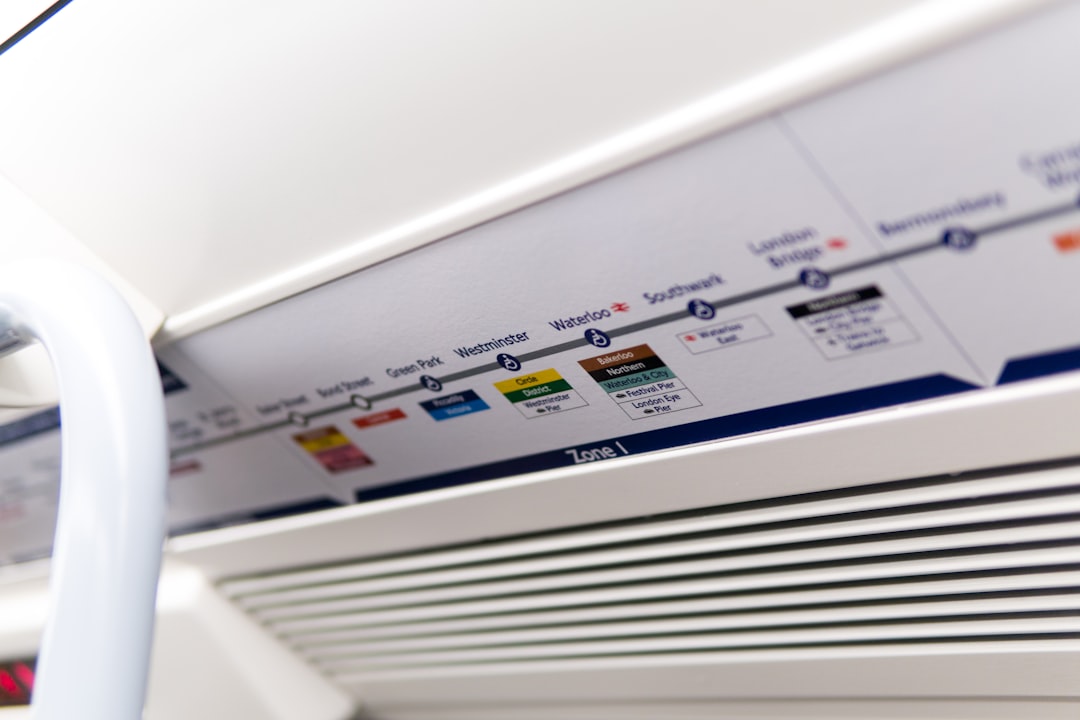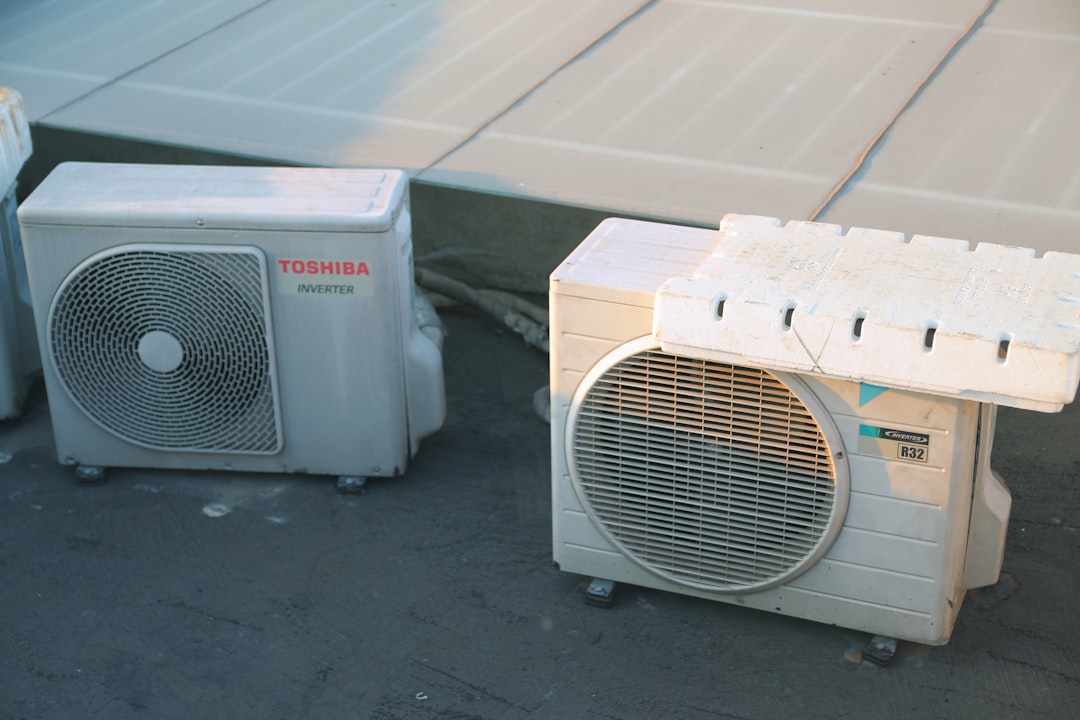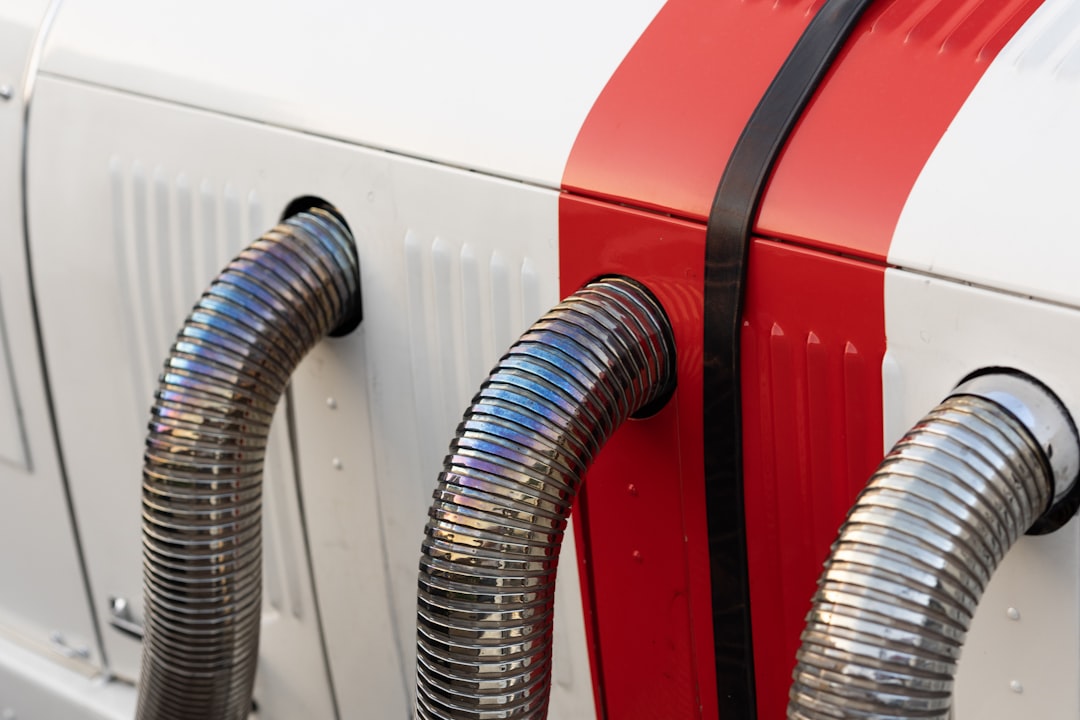

Engage prospects with a scan and streamline customer engagement with FREE QR code marketing tools by Sona – no strings attached!
Create a Free QR CodeFree consultation

No commitment

Engage prospects with a scan and streamline customer engagement with FREE QR code marketing tools by Sona – no strings attached!
Create a Free QR CodeFree consultation

No commitment
In today’s digitally driven world, QR codes have evolved from a novelty to a strategic powerhouse in bridging offline engagement with online action. For auto air conditioning equipment suppliers, QR codes represent a frictionless and surprisingly effective way to boost lead generation, streamline maintenance workflows, and drive measurable engagement across print and product surfaces without requiring an app download or complex setup.
Amid a competitive market where buyers demand real-time access to product information, support, and inventory, QR codes empower auto air conditioning equipment suppliers to connect physical assets like catalogues, packaging, and showroom signage directly to interactive digital experiences. This capability is particularly valuable for showcasing product listings, capturing service inquiries, and guiding prospects efficiently along the purchase journey.
Many suppliers still struggle to capture high-value prospects who engage offline but never enter the CRM. By strategically deploying QR codes throughout brochures, AC equipment displays, and point-of-sale materials, suppliers can directly address the challenge of missing out on leads who hesitate to fill out forms or initiate conversation. In doing so, businesses not only replace outdated workflows but also gain critical visibility into buyer behavior, paving the way for more proactive sales outreach and support.

For auto air conditioning equipment suppliers, a major hurdle is the loss of high-value leads who never formally signal interest, often falling through the cracks due to manual processes or paper-heavy lead capture. QR codes bridge the gap between physical touchpoints and digital outcomes, making it easier to generate high-quality leads, automate service requests, and increase engagement while reducing friction for buyers and technicians.
Start by transforming your most common analog interactions into digital pathways. Replace paper catalog requests with scan-to-view product galleries and spec sheets. Convert warranty cards and service request forms into mobile-first forms behind a QR that auto-populates fields and routes data to your CRM. Use QR-triggered demos and pricing calculators in showrooms to capture intent on the spot. Each of these upgrades reduces lag, improves accuracy, and gives your team the data they need to follow up with context.
With a centralized platform managing your QR codes, every scan becomes traceable and actionable. Tools like Sona QR route scan data directly into your CRM and marketing systems, replacing legacy workflows that delay or lose critical lead information. The result is a repeatable system for capturing demand and improving both sales and service outcomes.

Traditional marketing materials often fail to reveal who interacts with them, leaving suppliers with little visibility into which buyers are actively researching compressors, condensers, recovery machines, or diagnostic tools. In a market where late outreach or guessing buyer intent leads to lost deals, QR codes have become mission critical, even earning an IEEE milestone. They remove friction by letting buyers take immediate action from print, packaging, and display surfaces while creating a trackable signal that your systems can use.
Dynamic QR codes add further flexibility. Campaign destinations can be adjusted as product lines change or seasonal promotions shift, without reprinting catalogs or signage. Suppliers can redirect scans to in-stock alternatives, updated refrigerant guidelines, or safety bulletins, ensuring that every print piece remains current and useful. This agility keeps your information accurate and your marketing spend efficient.
When QR codes are attached to product literature, price lists, or tool displays, they convert curiosity into a measurable signal. Sales teams can identify which buyer segments are viewing R134a versus R1234yf tools, for example, then follow up with the right recommendations and financing options.
Different buyer journeys require different actions, so the QR code format you select should map to the outcome you want. For auto AC equipment suppliers, formats that simplify education, service, and purchasing tend to deliver the most value. Dynamic codes offer the added benefit of routing updates and analytics without reprints, which is important in a fast-moving product environment.
When planning destinations, remove unnecessary steps. Send buyers to a mobile-optimized landing page that loads quickly, is focused on one action, and captures essential data. If your goal is a service request or warranty activation, route to a short form that uses autofill and conditional logic. If your goal is contact exchange, consider providing a vCard alongside a product page so the prospect can save your team’s details in one scan.
Dynamic codes are best when you need measurement, ongoing optimization, or frequent content changes. Static codes work for fixed PDF manuals or evergreen safety posters, but they will not provide analytics or allow you to update destinations.

Auto air conditioning equipment suppliers invest heavily in trade shows, print collateral, and branded materials, yet many of those interactions are not attributable to revenue. QR codes convert high-visibility surfaces into measurable entry points, letting you see which audiences are engaging and what actions they take next. This is especially powerful where the buyer path spans multiple touchpoints such as events, dealer counters, and installer visits.
Mapping QR placements to the buyer journey ensures that each scan corresponds to a clear goal. Awareness placements might link to product videos or catalog highlights. Consideration placements might send visitors to comparison tools or compatibility checks. Conversion placements might offer instant quotes or financing pre-qualification. This progression captures intent at every stage and channels it into your funnel.
By focusing on placements where buyers are already evaluating options or seeking help, you reduce the drop-off between interest and action. Every scan becomes a trackable touch that drives smarter follow-up and better allocation of sales resources.

Auto AC equipment buyers and users often move quickly between research, purchase, and service. QR codes simplify those transitions and make each interaction measurable. The following use cases meet common objectives in this vertical, from faster support response to more qualified leads.
These use cases streamline buyer and technician workflows that used to depend on phone calls, emails, or paper forms. They also provide the analytics needed to improve the next event, display, or packaging run.
Every scan provides actionable context about buyer intent, location, and timing. By deploying multiple QR codes across your assets, you can segment audiences based on what they scanned and when they scanned it, then tailor your follow-up accordingly. This reduces wasted outreach and increases the relevance of your messaging. For follow-up strategy, see intent-driven retargeting.
Start by tagging each code by journey stage and objective. Awareness codes might live on ads or vehicle wraps and link to top-of-funnel content. Consideration codes on spec sheets or comparison cards signal deeper research. Conversion codes embedded in quotes, pricing sheets, or financing offers indicate readiness to buy. As the data flows into your CRM, you can build audiences and automate the next step in their journey.
With Sona QR, each QR becomes a smart entry point into your funnel. As scans accumulate, you move from assumptions to real behavior, which improves targeting precision and increases conversion across email, SMS, and paid media.

QR codes serve as connectors across your offline and digital campaigns, enabling real-time engagement and richer data collection at every touchpoint. In an industry where buyers compare specs on a counter one moment and open a financing calculator on their phone the next, QR codes unify the experience and provide attribution for each step.
Integrating QR codes into the channels you already use elevates their performance. A catalog becomes a lead capture asset. A product display becomes a training and support hub. A direct mailer becomes a personalized offer that you can track and optimize. By orchestrating these scans from a single platform, you can measure effectiveness and reallocate spend to the placements that deliver the most pipeline.
A centralized platform such as Sona QR lets you manage codes across all channels, monitor performance in one dashboard, and sync scan data with your CRM and ad platforms. This turns offline engagement into a connected, measurable funnel.
Launching a QR campaign is straightforward when you follow a structured plan. In this checklist, each step highlights best practices tailored to the realities of auto AC equipment suppliers. Use it to align your team, eliminate avoidable mistakes, and speed time to value.
Before you begin, define what success looks like for this initiative. Do you want more demo bookings at AAPEX. Do you need faster warranty registrations for a new compressor line. Are you trying to attribute showroom interest to downstream quotes. Clear goals focus your creative, technical, and operational choices.
A final review after your first 30 days should highlight which assets generate the most engagement, which offers resonate, and which journeys need refinement. Iterate quickly so each new print run or event deployment benefits from what you have learned.
Many suppliers struggle to justify campaign budgets because they cannot tie offline interactions to real sales or service outcomes. QR code analytics close this attribution gap. See offline attribution for more insight. By transforming anonymous engagement into measurable events that flow into your funnel, QR code analytics let you track progress from scan to revenue. Basic metrics like total scans and device type are useful, yet the real value comes from connecting each scan to downstream actions such as form submissions, demos, quotes, and closed revenue.
Assign codes at the asset level so you know whether a compressor display card or a training brochure drove the initial interest. Use UTM parameters to identify the campaign, medium, and placement. Sync every scan to your CRM to create or enrich a contact record, then log follow-up steps and outcomes. Over time, you will see which placements and messages move buyers from curiosity to commitment.
Sona QR captures real-world engagement, while Sona.com turns that engagement into insights you can act on. Together they allow you to connect offline scans to revenue and incorporate QR codes into your performance marketing strategy with confidence.
Once your first campaigns are live, small improvements can lead to big gains. Focus on clarity of the offer, consistency of the experience, and completeness of your data. The more predictable your system becomes, the easier it is to scale across products, regions, and channels.
Make it effortless for staff to promote QR-driven experiences. Provide quick scripts for counter teams and booth staff that explain the benefit of scanning, such as instant access to compatibility charts or priority service. Equip technicians with QR-powered service stickers to place under the hood or on AC service ports, creating a durable channel for reorders and reminders.
By following these practices, suppliers gain control of the customer journey, reduce leakage, and increase both immediate conversion and lifetime value. Over time, your QR program becomes a core operating system for how you capture and serve demand.
QR codes have become a foundational strategy for auto air conditioning equipment suppliers. They transform every product touchpoint and printed asset into a trackable, interactive digital entry point, reducing lost opportunities, surfacing high-intent buying signals, and providing closed-loop analytics on sales effectiveness. This is not just convenience. It is a competitive advantage in an environment where speed, accuracy, and attribution determine who wins the deal.
When executed well, QR programs deliver instant information access, timely lead capture, and robust measurement. They move buyers and service techs from awareness to action and let every scan serve as a springboard for growth. With dynamic codes, structured destinations, and integrated analytics, teams can modernize legacy workflows without overhauling their entire tech stack.
For auto air conditioning equipment suppliers, integrating QR codes is about unlocking new growth levers, efficient engagement, and accurate measurement in a rapidly evolving industry. With Sona QR, you can generate and track codes for free, manage campaigns from a single dashboard, and sync scan data to your CRM and ad platforms. Start creating QR codes for free.
QR codes have revolutionized the auto air conditioning equipment suppliers industry by transforming traditional product access and support into seamless, data-driven customer interactions. Whether it’s enabling instant access to detailed product specs, facilitating easy ordering, or providing timely maintenance guides, QR codes empower suppliers to deliver superior customer experiences while capturing valuable insights on user engagement.
Imagine your customers scanning a code to instantly troubleshoot or reorder parts, boosting satisfaction and repeat business without extra effort on your end. With Sona QR, you can create dynamic, trackable QR codes that update in real time—no reprinting needed—and connect every scan directly to sales and support outcomes. This means smarter marketing, faster service, and measurable growth for your business.
Start for free with Sona QR today and turn every scan into an opportunity to enhance customer relationships and drive revenue in the competitive auto air conditioning equipment market.
The article does not list specific top auto air conditioning equipment suppliers but focuses on how suppliers can use QR codes to enhance engagement and sales.
Choose a supplier that integrates digital tools like QR codes to provide real-time product information, streamlined service workflows, and measurable engagement to ensure quality and responsiveness.
Common equipment includes compressors, condensers, recovery machines, diagnostic tools, hoses, fittings, and refrigerant tanks.
Ensure quality by selecting suppliers who use digital engagement tools such as QR codes for easy access to specs, warranty registration, service requests, and verified product compatibility.
Latest trends include the use of QR codes for dynamic product information, real-time lead capture, automated service workflows, and integrated analytics to improve sales and service outcomes.
QR codes help suppliers boost lead generation, streamline maintenance requests, provide real-time product details, and track buyer engagement without requiring app downloads.
Dynamic QR codes are best for trackable, editable links that support analytics and updates, while static QR codes suit fixed content like safety manuals.
Place QR codes on packaging, brochures, showroom displays, event materials, service stickers, point-of-sale counters, vehicle fleets, and direct mail inserts.
Use platforms like Sona QR to monitor scan rates, device types, locations, form completions, and tie scan data into CRM systems for revenue attribution.
Use cases include automating service requests, enabling product comparisons, capturing event leads, facilitating warranty activations, and providing quick access to support contacts.
Integrate QR codes across print collateral, social media, direct mail, digital signage, trade shows, and vehicle branding to unify offline and online buyer experiences.
Define goals, select use cases, choose QR code types, design and test codes, deploy strategically across channels, and track performance to optimize results.
Tag QR codes by buyer journey stage, use case, role, and location to segment audiences, then sync scan data to CRM and ad platforms for targeted follow-up.
Use unique codes per asset, add UTM parameters, automate post-scan workflows, educate staff and customers on benefits, and deploy creative placements like service stickers.
Analytics close the attribution gap by linking offline scans to online actions, enabling measurement from initial engagement to revenue generation.

QR codes have evolved from a novelty to a strategic powerhouse, especially for auto air conditioning equipment suppliers seeking to bridge the gap between offline customer engagement and online action. This capability addresses the persistent frustration of missing out on high-value prospects who interact with catalogs, packaging, or physical sales materials without leaving a digital trail, leading to lost opportunities and incomplete customer data.
As competition intensifies and buyer expectations rise, auto air conditioning equipment suppliers must not only capture attention but also create seamless, data-driven access to product specs, service support, and warranty activation at every touchpoint. When valuable offline interactions go untracked, promising leads often fall through the cracks, and post-sale engagement signals remain invisible to sales and marketing teams. Employing a thoughtful QR code strategy allows suppliers to convert every piece of physical collateral, from catalogs and equipment labels to dealer invoices, into measurable, intent-rich entry points for both lead identification and ongoing support.
This guide explores how auto air conditioning equipment suppliers can leverage QR codes to overcome real-world pain points at every stage, from supply chain logistics to customer service. You will learn practical tactics for reducing manual workflows, surfacing high-fit prospect signals, and automating connections that ensure no valuable engagement goes unnoticed or unaddressed. Along the way, we will highlight how platforms like Sona QR centralize tracking and attribution so your teams can see which scans drive revenue and retention.

Ensuring every potential prospect and customer touchpoint is digitally trackable remains a persistent industry challenge. Traditional analog methods like paper warranty cards, printed spec catalogs, and phone-based service inquiries often create friction for buyers and result in untracked intent for suppliers. QR codes bridge this gap—see how QR codes work—by turning offline moments into actionable data: one scan opens the door to dynamic product content, one-tap quote requests, and automated CRM updates.
Replacing manual processes with QR-enabled flows leads to faster responses, fewer errors, and better customer experiences. For example, a parts label that links to installation diagrams reduces support tickets and speeds technician work, while a catalog scan that pre-fills a quote form helps reps prioritize high-fit buyers. When these scans sync to your CRM and marketing tools, every interaction becomes a lead signal you can act on quickly.

In this category, many buyers research in the field and on the go. Technicians scan part numbers on shop floors, fleet managers browse printed catalogs, and procurement teams review quotes at their desks. Without a digital bridge, those analog interactions rarely make it into your systems. QR codes solve this visibility gap by making every physical asset scannable and trackable, which turns anonymous interest into actionable signals—a technology recognized as an IEEE milestone.
Dynamic QR codes also extend the shelf life of printed materials. You can update product specs, certifications, compatibility charts, and promotional offers without reprinting a single page. This flexibility is especially valuable in auto air conditioning, where seasonal demand, supply chain changes, and product updates can shift quickly. Instead of outdated PDFs, a scan can route to the most current resource with no extra steps required for the user.
Real-time analytics tell you where interest is heating up. You can see which codes get scanned, when, and where, then connect that data to orders, service requests, and renewals. With that visibility, suppliers can prioritize follow-ups at peak moments of intent, tailor outreach to regional demand, and refine placement strategies across packaging, dealer collateral, and events. The result is a tighter feedback loop between offline engagement and digital conversion.

Auto air conditioning equipment suppliers serve multiple audiences at once: dealers, installers, service technicians, and end customers. Each audience benefits from different QR experiences. Choosing the right format for the job ensures scans translate into the next best action for the user while giving you the data you need to optimize performance.
Static codes work for fixed destinations like a universal installation library, but dynamic codes are far more useful in this industry. With a dynamic QR, you can change a code’s destination to a new spec sheet, promotion, or form without updating the print. That keeps your field materials current and your campaigns agile, as you can see in this QR customization overview.
Dynamic codes empower suppliers to pivot quickly. When inventory shifts or promotions change, update the destination and keep your offline materials valid without waste. By piping QR-generated data into your marketing and sales stack, you create a consolidated view of each account’s engagement and can tailor next steps based on who scanned, where they scanned, and why.

Growth often hides inside the untracked moments that already happen across your footprint. Packaging gets handled daily, catalogs get passed around job sites, and invoices get reviewed at desks and in back offices. Turning these everyday assets into digital entry points helps you capture demand at the source and keep buyers engaged long after the first sale.
Strategic placement matters. Look for recurring processes that involve paper, repeat phone calls, or manual lookups. Embed QR codes where a scan can remove friction for the user and produce a signal for your team. Clear benefits and strong calls to action will lift scan rates and produce measurable outcomes you can optimize over time.
Deploying QR strategies across these surfaces ensures fewer missed prospects and more actionable data for nurturing, cross-selling, and retention. Over time, you will build a map of where your best leads come from and which placements deliver the strongest ROI.

Across the auto air conditioning ecosystem, the best QR use cases combine user convenience with business impact. They eliminate steps for the buyer and create data-rich triggers for your teams. Below are three high-value applications that align with common buyer journeys.
Many technicians and buyers need instant clarity. When a part arrives on site, they want fast access to install guides, wiring diagrams, and compatibility notes. A QR on the box or label resolves that need while capturing a signal for post-sale engagement. The same principle applies to warranty activation and service. If you make it easy for customers to register products, request parts, or schedule support, you will capture timely data and reduce friction at critical moments.
These use cases can be expanded with personalization and dynamic routing. For instance, a dealer-specific code on packaging can send buyers to the local installer’s scheduler while still giving the manufacturer full visibility into engagement and downstream conversions.
Each QR scan is a precise signal of intent. It carries context like product interest, location, and timing. By distributing unique codes across journey stages and channels, you can segment audiences automatically and serve next steps that match what the scanner is trying to do.
Start by mapping your funnel to physical touchpoints. Use one set of codes for awareness assets like event signage and mailers, another set for consideration assets like catalogs and demo units, and a third for conversion moments like pricing sheets, warranty cards, and post-install checklists. Tag each code by stage, use case, and partner so you can compare performance and personalize the next interaction.
With dynamic codes and platform integrations like Sona QR, each scan becomes a smart entry point that feeds your data model. You can move from broad retargeting to actionable micro-segments that convert faster and churn less.
QR codes unify marketing channels that traditionally operate in silos. They give your print, events, packaging, and even video assets a measurable digital endpoint. This is especially valuable for suppliers who invest heavily in dealer collateral and trade shows where lead capture often depends on manual note-taking and business cards that never make it into a database.
A connected funnel looks like this: a prospect scans a code on a catalog page, lands on a product configurator, completes a quote request, and receives an automated follow-up while your sales team is notified with the scan context. That same system can route service scans to your support queue and attribute revenue back to the original physical asset.
With a centralized platform like Sona QR, you can manage all codes, monitor performance, and sync scan data to your CRM and ad platforms. This allows you to refine creative, placement, and offers based on the data your offline assets produce.
A disciplined approach to planning and deployment turns QR codes from a novelty into a growth engine. Treat each campaign as a measurable experiment: pick a use case, define a target outcome, and design both the user experience and the data flow from scan to system of record.
Before you launch, audit your physical materials and customer journeys. Identify where QR codes can replace manual processes, shorten time-to-information, and capture critical signals. Then standardize how you tag, track, and report results so wins can be scaled and repeated across partners and regions.
Platforms like Sona QR and Sona.com make it feasible to automate each step, from creating dynamic codes and tagging assets to syncing scan data with CRM records and attributing revenue. That automation reduces human error and ensures high-value signals do not get lost.
Attribution has long been a challenge for suppliers that rely on physical materials and channel partners. Knowing that someone picked up a catalog is not enough. You need to see which assets were scanned, who scanned them, and how those interactions influenced pipeline and retention. QR codes make those signals visible and actionable. For measurement strategy, see Sona’s blog post The Essential Guide to Offline Attribution.
The key is to capture granular scan data, connect it to identities where possible, and link engagement to outcomes. When scan events sync with your CRM and marketing tools, they can trigger workflows, contribute to lead scores, and inform media targeting. Over time, you build a clear picture of which placements, products, and messages drive results.
Technology advancements like Sona’s Buyer Journeys unify fragmented touchpoints across buying stages. You can link QR scans with website visits, ad clicks, emails, and CRM activities to build a complete picture from first touch to purchase readiness.
QR codes work best when they are embedded into daily operations and backed by automation. The goal is to make scans both useful for the customer and valuable for your data strategy. Focus on clarity, speed, and measurable next steps.
Choose tips that match your most common media and workflows. For auto air conditioning suppliers, that usually means packaging, catalogs, trade events, dealer communications, and service paperwork. Equip every team to encourage scanning and explain the benefit in a sentence or two.
Example: Place QR codes on dealer maintenance reminder stickers so technicians can pull up service schedules instantly, submit parts requests on the spot, and signal service readiness before issues become urgent. This turns once invisible engagement into actionable business signals and repeat revenue.
Seeing how peers deploy QR codes makes it easier to identify your next move. The most effective campaigns tie a clear benefit to the scan, reduce a known friction point, and route data where it can be acted on immediately.
Consider these examples and adapt them to your products, partners, and customers. The right application will reflect your sales motion and service model while creating insights that help you allocate resources and refine messaging.
Encouraging user-generated content through QR-initiated review or referral campaigns not only captures new prospects but also provides clear, actionable feedback on product and service experience. Over time, these signals inform product development and service playbooks.
Success with QR codes depends on visibility, clarity, and data discipline. Codes must be easy to scan in real conditions, the destination must meet the user’s need instantly, and the data flow must be reliable so your teams can take action. Small design and process choices make a big difference.
Avoid common mistakes like burying codes in cluttered layouts, sending scanners to slow or irrelevant pages, or using static codes where you need agility and tracking. Invest in testing, training, and automation so your program scales with minimal friction.
QR codes have evolved into a critical engagement lever for auto air conditioning equipment suppliers determined to bridge persistent gaps between physical world interactions and digital pipeline growth. By embedding codes on every catalog, part, and invoice, suppliers address long-standing challenges such as missing valuable prospects, invisible engagement signals, and outdated account data that previously resulted in lost leads or untapped upsell potential.
A well-implemented QR strategy delivers a connected buying and support experience. It provides instant access at every stage of the journey, closes data gaps that hinder timely outreach, and ensures every scan turns into actionable insight for your business. With these tools, suppliers can adapt quickly, nurture relationships proactively, and surface the signals needed to drive retention and growth in a demanding HVAC marketplace.
Experimenting with QR-driven processes allows suppliers to see the value of converting every physical touchpoint into a digital onramp. The payoff shows up in faster lead response times, higher service satisfaction, and improved attribution that justifies investment. With Sona QR and Sona.com, you can generate dynamic codes in minutes, centralize analytics, and connect scans to revenue so your teams can scale what works and sunset what does not. Start creating QR codes for free.
QR codes have transformed the auto air conditioning equipment suppliers industry by turning traditional product information and service access into seamless, measurable engagement opportunities. Whether it’s enabling instant access to technical specs, facilitating quick service bookings, or providing real-time product updates, QR codes elevate customer experiences while streamlining supplier-customer interactions for greater efficiency and trust.
Imagine customers scanning a code on your equipment to instantly access manuals, warranty details, or even request maintenance—all while you track usage patterns to optimize your offerings. With Sona QR, you can create dynamic, trackable QR codes in seconds, update content instantly without reprinting, and connect every scan directly to actionable insights and revenue growth. No missed leads, no outdated materials—just smarter connections.
Start for free with Sona QR today and transform every scan into a lasting customer relationship and a measurable business advantage.
The article does not list specific top suppliers but focuses on how auto air conditioning equipment suppliers can leverage QR codes to enhance customer engagement and sales.
Choose suppliers that use strategies like QR codes to provide seamless digital access, track customer interactions, update product information dynamically, and integrate with CRM systems for improved service and sales.
The article does not detail specific types of auto air conditioning equipment but emphasizes the importance of providing up-to-date product specs, installation guides, and service support via digital tools.
Ensure quality by selecting suppliers who offer real-time updated product information, warranty registration via QR codes, and accessible installation and service resources that reduce errors and improve customer satisfaction.
While the article focuses on QR code technology for supplier engagement, it highlights trends such as dynamic digital content updates, real-time analytics, and automated workflows that improve buyer experience and supplier responsiveness.
QR codes turn offline interactions into trackable digital data, enabling suppliers to capture buyer intent, automate follow-ups, provide updated product information, and improve post-sale engagement and support.
Suppliers use dynamic QR codes linking to web pages, forms for quote or warranty, vCards for contacts, SMS or email intents for quick service requests, and app download links to serve various user needs.
Place QR codes on equipment packaging, product labels, printed catalogs, invoices, event signage, dealer kits, and trade show materials to capture engagement at key customer touchpoints.
Use QR-enabled analytics platforms to capture scan data like time, location, and device, sync scans with CRM systems, define KPIs such as scan-to-lead rates, and automate follow-ups to optimize campaign performance.
Avoid placing codes in cluttered areas, linking to slow or irrelevant pages, relying only on static codes without tracking, and failing to train staff to promote scanning and explain its benefits.
By distributing unique, stage- and role-specific QR codes, tagging scans with context like location and product interest, and syncing data to CRM and ad platforms, suppliers can create precise segments for targeted follow-up.
Key use cases include providing product information access via install guides, enabling warranty registration and proof of installation through mobile forms, and facilitating maintenance, service, and reorder processes via invoices and service tags.
Integrate QR codes across print collateral, social media prompts, direct mail, digital signage, and trade events to unify offline and online channels, enabling measurable lead capture and seamless customer journeys.
Define clear objectives and target users, select appropriate QR code types, design and test codes for usability, distribute strategically with localization and staff training, and measure and optimize results using analytics platforms.
Dynamic QR codes allow suppliers to update destinations without reprinting, append tracking parameters, run experiments, and maintain current information, enabling more agile and measurable marketing campaigns.

QR codes have evolved from a novelty to a strategic bridge between offline engagement and online actions. This technology was recognized as an IEEE milestone. For auto air conditioning equipment suppliers, QR codes provide a seamless, data-driven method to boost qualified leads, streamline product discovery, and enhance customer support without requiring app downloads or complex integrations. When placed on catalogs, boxes, trade show displays, and service kits, they transform interest in the physical world into measurable digital activity that sales and marketing teams can act on quickly.
Within this industry, efficiency and instant information access are crucial, yet many sales and service experiences still rely on analog processes such as printed catalogs and manual inquiry forms. This often results in missed opportunities when interested prospects interact with physical materials but never enter the CRM for nurturing. Embedding QR codes at every key touchpoint gives instant access to digital product information, inventory, warranty details, and support content from the physical environment, making it easier to capture interest where it happens. With dynamic QR codes and analytics, suppliers can segment by buyer type, product, and context, then automate follow-ups to accelerate deals and support.
This guide details how QR codes can transform lead generation and customer engagement for auto air conditioning equipment suppliers. By leveraging segmentation, analytics, and workflow automation, suppliers can reduce lost leads, improve lead quality, and drive measurable outcomes across the automotive HVAC supply chain. You will learn where to place QR codes, which formats to use, how to track scans to revenue, and how to build high-value audiences for retargeting based on real engagement signals.

For auto air conditioning equipment suppliers, a persistent challenge is missing high-value prospects who browse materials but never submit traditional lead forms. Catalogs are read, spec sheets are kept, and booth conversations happen, yet the lead never reaches your CRM. QR codes bridge this gap between physical touchpoints and digital outcomes, capturing leads at the moment of interest, accelerating buyer research, and enabling instant support in the field or at the counter.
Replacing analog processes with QR-enabled experiences also shortens sales cycles. Printed brochures become gateways to live inventory and pricing. Paper warranty cards become two-minute mobile forms. Manual trade show sign-up sheets become instant, enriched contacts in your CRM. When each scan is attributed to the exact asset and placement, you finally see which channels and messages move the needle.
Here is a practical flow to get started:
By using QR-linked forms at trade events and on sampling kits, suppliers enable faster, higher-quality lead collection, reduce manual errors, and identify priority visitors for targeted follow-up. The result is more qualified pipeline, streamlined operations, and better forecasting because every scan becomes a measurable signal of intent.

Traditional signage, warranty cards, or spec sheets fail to reveal which prospects are interested or which touchpoints generate meaningful engagement. Distributors might hand out hundreds of catalogs, and service bays might stock multiple brands, yet few interactions flow back into a central system. Without this visibility, sales opportunities are easily lost and follow-ups remain unfocused, leaving your team guessing at what content to prioritize and which accounts to call first.
QR codes address these challenges by creating digital connections at every offline moment. When a technician scans a code on a compressor box to check compatibility, or a shop manager scans a poster to book a demo for a recovery machine, you capture intent in seconds. With dynamic codes and analytics, you can track scans by location, device, and campaign, then update destinations without reprinting. This makes every physical asset both actionable and measurable.
Key benefits include:
This visibility is transformative. Routing scan data to your CRM allows you to prioritize and retarget high-fit accounts, align sales and marketing around shared signals, and directly link offline engagement to revenue impact across brands, distributors, and territories through intent-driven retargeting.
Auto HVAC suppliers benefit most from QR formats that accelerate discovery, support, and conversion. While QR codes can point to nearly any digital destination, the most effective formats are those that condense multi-step tasks into a single scan, especially for time-pressed technicians, buyers, and service managers.
Dynamic codes are recommended for most scenarios because destinations often need to change as inventory, promotions, or service bulletins evolve. Static codes work for permanent assets such as safety posters or evergreen product families. The following formats cover core needs across the buying and ownership lifecycle:
With Sona QR, you can generate and manage all of these formats in one platform, switch destinations on the fly, and centralize analytics so your team always knows which codes drive meaningful action.
Growth comes from turning every high-traffic physical surface into a digital entry point. In auto air conditioning supply, your buyers are technicians, shop owners, parts managers, and fleet operators who are often on the move. QR codes shine in environments where typing URLs is impractical and immediate answers are expected.
Start by mapping your most common offline touchpoints. Identify where buyers consult printed materials, handle products, or interact with your brand in the field. Then layer clear, benefit-driven QR codes that reduce friction and invite action. The strongest placements are those that naturally coincide with a question, a decision, or a potential next step.
QR-based strategies make offline engagement measurable, revealing which touchpoints deserve more investment. Over time, placements can be optimized for scan rates, conversion rates, and downstream revenue, turning everyday materials into repeatable growth levers.
Auto HVAC suppliers can apply QR codes across the entire lifecycle, from discovery to post-sale support. The key is to align each use case with a clear action and a measurable outcome so that scans translate into pipeline, retention, or upsell opportunities.
Focus on high-frequency interactions where buyers already reach for information. Technicians want fitment and installation guidance, buyers want pricing and availability, and managers want simplified administration such as registration and RMAs. Each of these needs can be met with a single scan and a purpose-built destination.
Each use case turns analog processes into digital workflows that enhance tracking and revenue potential. When powered by dynamic QR codes, these initiatives remain flexible even as your product lineup and promotions evolve.
Each scan is a behavior signal. When you deploy multiple QR codes across print and physical environments, you collect a mosaic of intent that can be segmented by product interest, buyer role, location, and timing. These signals feed email, SMS, and paid media retargeting that speaks directly to what the scanner needs next.
Start by mapping QR codes to your buyer journey. Awareness scans might come from trade show banners and fleet mailers. Consideration scans typically come from catalog spec pages and POS displays. Conversion scans often come from pricing sheets, coupons, and warranty cards. Use unique codes at each stage to auto-build segmented audiences and track progression over time.
With a disciplined approach to tagging and routing, every code becomes a smart entry point into your funnel. Retargeting based on what people scan, where they scanned, and when they scanned consistently outperforms generic outreach.
QR codes unify the physical and digital sides of your marketing program. They make print measurable, events interactive, packaging helpful, and OOH media actionable. When all codes roll up to a single analytics layer, you gain a complete view of which channels generate demand and how scanners move from first touch to revenue.
Auto air conditioning equipment suppliers typically rely on a blend of catalogs, trade shows, distributor partnerships, and direct sales. QR codes knit these efforts together. They let you update content without reprinting, and they allow your team to adjust campaigns in real time based on scan patterns and conversion outcomes.
QR codes serve as the offline onramp to your digital marketing engine. With a centralized platform like Sona QR, you can manage all codes, monitor performance in one place, and sync scan data with your CRM and ad platforms for full-funnel visibility.
A well-run QR program follows a consistent playbook. Clarity about goals, smart code selection, disciplined design, thoughtful placements, and rigorous optimization will compound results with each campaign. The checklist below outlines the essential steps to take a concept from planning to measurable impact.
Use it to launch your first initiative or to standardize QR deployment across teams and regions. Every step has a direct connection to performance, from the message on your CTA to the testing conditions for scannability. Treat each code as a mini campaign with a clear purpose and a plan for what happens after the scan.
A standardized checklist accelerates rollout and creates a feedback loop that improves each new campaign. Document your learnings in a shared playbook so future teams can replicate what works.
QR codes are not just about engagement. They provide a measurable line of sight from a physical interaction to pipeline and revenue. For auto air conditioning equipment suppliers, that level of attribution is crucial, especially when marketing spans distributors, regions, and co-branded materials that are traditionally hard to measure. See Sona offline attribution.
The most valuable insight is not simply that a scan occurred. It is understanding what happened afterward. Did the person request a quote, book a demo for a recovery machine, register a warranty, or start a support ticket? Connecting these dots requires integrated analytics and CRM workflows that attribute outcomes to the right assets and channels. Sona is an AI-powered marketing platform that turns first-party data into revenue by unifying identity resolution, attribution, and activation across your stack.
When marketing and sales can see which physical assets drive conversion, budgets shift from guesswork to precision. Over time, your QR program becomes a core part of your performance marketing strategy, not a side experiment.
The most successful programs share a few traits: consistent tagging, clear CTAs, automated follow-ups, and staff who know how to prompt a scan. Small improvements in each area, multiplied across placements and campaigns, produce significant compounding gains in scan rates and conversions.
Prioritize tips that match the materials you use most. For auto HVAC suppliers, that often means catalogs, packaging, trade show assets, and distributor counter materials. Integrate QR activity with the tools your teams already use so that data flows cleanly and actions trigger automatically.
For creative deployment, consider QR codes on service van decals that open a territory contact form, or QR codes on invoices that link to reordering and maintenance schedules. Both meet buyers where they already are and make recurring interactions easier.
Real implementations reveal how QR codes reduce friction, make print measurable, and unlock upsell opportunities. The most successful executions tie each code to a specific action and a relevant context, then route data into CRM workflows for timely follow-up.
Below are representative scenarios that illustrate the before-and-after impact of QR adoption in the auto HVAC supply ecosystem. While results vary by product line and market, the patterns hold: easier access, cleaner data, and faster paths to revenue.
These examples demonstrate how analog-to-digital shifts improve operational efficiency and expose hidden revenue. With dynamic codes and analytics, suppliers can continually refine placement and messaging for stronger results over time.
A few best practices will help you avoid common mistakes that reduce scan rates or muddy your data. Most pitfalls stem from unclear CTAs, poor scannability, generic destinations, or a lack of integration with downstream systems. These issues are easy to correct once you know what to look for.
Invest in the fundamentals: code quality, context-aware design, thoughtful placement, and end-to-end measurement. When your codes are easy to scan, your promise is clear, and the next step is valuable, buyers respond. When your data flows into CRM and advertising platforms, marketing and sales can collaborate around shared realities rather than assumptions.
QR codes provide auto air conditioning equipment suppliers with a way to reshape every phase of the buyer and product lifecycle. By transforming manual and analog processes into digital engagement points, suppliers reduce missed connections, increase account visibility, and build actionable data that supports both sales and retention. Teams move beyond distributing printed materials to orchestrating measurable journeys that start at the point of interest and end in revenue.
A targeted, analytics-driven approach means every physical asset, from catalogs to shipping labels, becomes a measurable engine for demand generation. This enables complete visibility from scan to sale, closing the gap between in-person contact and digital conversion. With Sona QR for code creation, management, and analytics, and Sona.com for attribution and buyer journey insights, you can capture demand at the source and convert it into results that grow month after month.
As more suppliers leverage QR codes across customer touchpoints, those adopting data-driven workflows will gain superior insights, deliver better buyer experiences, and achieve sustainable revenue growth as customer expectations evolve. Now is the time to start with one high-impact placement, measure outcomes, and scale what works. Start creating QR codes for free.
QR codes have transformed the auto air conditioning equipment suppliers industry from static product catalogs into dynamic, measurable engagement channels. Whether it’s streamlining customer acquisition, enhancing after-sales support, or providing instant access to technical resources, QR codes replace cumbersome processes with seamless, mobile-friendly solutions that capture real-time data and turn every interaction into a valuable business opportunity.
Imagine instantly connecting technicians and customers to installation guides, warranty information, or exclusive offers—all while tracking which resources drive the most engagement and sales. With Sona QR, you can create dynamic, trackable QR codes in seconds, update content without reprinting, and link every scan directly to your revenue growth. No more guesswork, just smarter, more effective outreach.
Start for free with Sona QR today and transform every scan into a lasting customer relationship and a measurable boost to your bottom line.
QR codes help bridge offline engagement with online actions by capturing leads, providing instant product information, enabling dynamic content updates, and tracking engagement to improve sales and marketing outcomes.
Suppliers can embed QR codes on catalogs, packaging, trade show displays, and service kits to capture leads at the moment of interest, automate follow-ups, and segment audiences for personalized outreach.
Effective QR code formats include dynamic web links to product pages, forms for warranty registration and support, vCards for contact sharing, SMS or email for service requests, app downloads, and Wi-Fi access codes.
High-impact placements include product packaging, trade show banners and booths, shipping labels, point-of-sale displays, field sales kits, vehicles, and printed catalogs to engage buyers where decisions are made.
Dynamic QR codes allow updating of destinations without reprinting, enable tracking and segmentation of scans, support retargeting campaigns, and provide analytics to measure campaign performance.
Suppliers should define clear goals, select appropriate QR code types, design with branding and clear CTAs, deploy codes strategically, train staff to promote scanning, and track and optimize performance using analytics.
They should use unique, trackable codes per asset, maintain scannability with proper size and contrast, test codes in real conditions, and integrate scan data into CRM and marketing platforms for actionable insights.
The article highlights the trend of using QR codes to digitally connect physical touchpoints, enabling real-time content updates, data-driven lead capture, automated workflows, and detailed attribution in the automotive HVAC supply chain.
Suppliers can tag scans by buyer role, product, channel, location, and time to segment audiences in their CRM and ad platforms, enabling personalized email, SMS, and paid media retargeting based on real engagement signals.
Suppliers should avoid unclear CTAs, poor code design, generic destinations, lack of integration with CRM systems, and using a single code for multiple assets to ensure accurate tracking and higher scan rates.
QR codes provide scan data by location, device, and campaign, enabling attribution of outcomes like demo bookings and warranty registrations to specific physical assets, which helps optimize marketing investments.
QR codes can provide access to live product inventories, technical specifications, compatibility tools, installation guides, warranty registration, maintenance resources, and support content.
By replacing analog processes with instant mobile access to product info, live pricing, warranty forms, and demo bookings, QR codes accelerate buyer research and enable faster decision making.
QR codes facilitate warranty registration, maintenance scheduling, support requests, and renewal campaigns by linking customers directly to mobile-friendly forms and resources.
QR codes unify offline and online marketing by making print materials, events, packaging, direct mail, digital signage, and trade shows measurable and interactive, with centralized analytics driving campaign adjustments.
Use Sona QR's trackable codes to improve customer acquisition and engagement today.
Create Your FREE Trackable QR Code in SecondsJoin results-focused teams combining Sona Platform automation with advanced Google Ads strategies to scale lead generation

Connect your existing CRM

Free Account Enrichment

No setup fees
No commitment required

Free consultation

Get a custom Google Ads roadmap for your business






Launch campaigns that generate qualified leads in 30 days or less.
